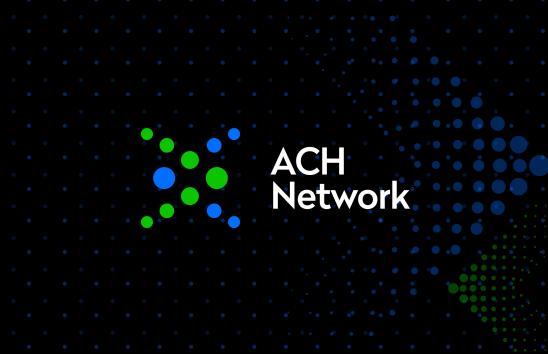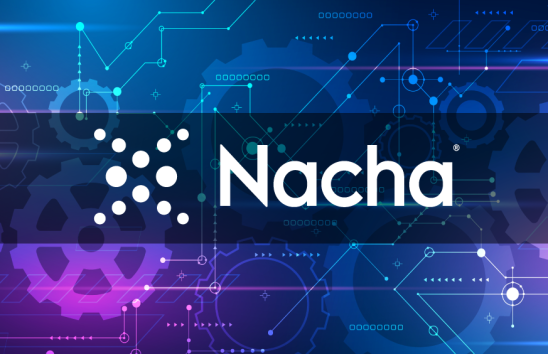IFX Version 1.x History
Afinis
Implementations based on earlier versions of the IFX standard continue to operate in production environments. This short history of older versions illustrates the commitment of IFX Forum to continuous evolution of the standard. Each successive version of the standard is backwards compatible with earlier versions within the same major release family.
IFX Version 1.8.1
Version 1.8.1 is a minor release of the IFX Business Message Specification (BMS), Version 1, that contains errata and minor content updates for the specification. The content addresses corrections needed following the distribution of the specification in its new format (see below).
Content from the ATM/POS Working Group includes some corrections and a proposal for implementing full support for Track 3 Magnetic Stripe processing.
Additionally, in order to accomplish the automated XSD generation (available to IFX Members and Subscribers only), construction of requests and responses within the database application has been changed.
The change to each request and response is as follows:
- All header elements are moved to a block
- All non-header elements are moved to a block
- These two blocks are the siblings and the only elements of the request/response
Note that, like the prior release, Version 1.8.1 of the BMS is distributed in a new download format, replacing the Microsoft Word format previously used. The Microsoft Compiled Help Manual (CHM) format provides improved search capabilities within the specification. Alternatively, the specification is available as a collection of HTML files that can be viewed with any current browser.
IFX Version 1.8
Version 1.8 includes significant content from the ATM/POS Working Group, extending the functionality of their messages by modifying existing messages, creating new messages for Purchase Transactions, and adding a new message to ensure efficient performance of ATM debits. Additional status codes and message elements have also been added for improved processing of ATM and POS transactions in compliance with requirements of EMV and similar organizations.
Another highlight of Version 1.8, achieved by the Business Banking Working Group, is full integration in the IFX BMS of all Payment Initiation messages registered under ISO-20022. Improved messages for payment initiation, payment status reporting and payment cancellation or reversal are included.
Note that Version 1.8 of the BMS is distributed in a new database format, replacing the Microsoft Word format previously used. The Microsoft Compiled Help Manual (CHM) format provides improved search capabilities within the specification. Alternatively, the specification is available as a collection of HTML files that can be viewed with any current browser.
IFX Version 1.7 Web Services Definition Language (WSDL)
The first version of the IFX WSDL for Version 1 allows existing IFX Version 1 XML instance documents to be transported via Web Services. No change is required to the processing of the XML instance documents, except to add the new standard XML namespace, urn:ifxforum-org:XSD:1.
This WSDL file contains the logical definition of the Web Service, the WSDL portType. This defines several WSDL and XML namespaces that are also standard.
This WSDL, while simple, contains several key concepts that will be carried forward in future IFX WSDLs, and that should be incorporated in custom IFX implementations:
- This WSDL is “wrapper-style.” This means that the top-level element in the WSDL types XML schema is defined in the WSDL, not in the IFX XML schema, and is intended to indicate the operation to be performed by the SOAP processing logic. In this WSDL, only one operation is defined, doIFX, with two related WSDL XML schema elements, doIFXRq, and doIFXRs, used in the request and response messages respectively. These two elements contain the IFX document element defined in the IFX XML schema. The use of this wrapper-style facilitates implementation with many current SOAP processing products, and allows the separation of the processing of the SOAP message into an outer SOAP implementation, and an inner IFX implementation. Since many existing IFX processing implementations exist and represent significant investment by the implementers, this split allows this investment to be retained, usually unchanged.
- This WSDL implements a regular, easily understood naming patterns for XML and WSDL namespaces and for WSDL portType, operation, message, and part elements.
- In the future IFX 2.0 standard, the IFX Forum plans to develop ways to decompose the IFX document into finer-grained units of data and to allow multiple run-time operations. Custom implementations of IFX Version 1 are encouraged to follow this pattern for operation structure and naming, in order to facilitate easier upgrade of their implementations to the new standard. The WSDL types XML schema elements may also contain multiple IFX messages, organized to a finer granularity than currently offered by the IFX document structure.
- This WSDL does not define any SOAP Header elements, such as for WS-Security or WS-Addressing. These are currently seen as an implementation detail and outside the scope of the standard.
- This WSDL does not define any SOAP Fault elements. The IFX status code concept is capable of expressing all outcomes from processing valid IFX documents. Therefore, the only faults that should occur are due to an ill-formed XML instance document or a service being unavailable. Standard SOAP Fault conventions handle both these outcomes already and are outside the scope of this standard.
IFX Version 1.7 Modular XML Schema
The IFX XML schema for Version 1.7 version decomposes the existing IFX Version 1.7 XML schema into a set of modular files, using the XML schema include directive to retain 100% compatibility with the existing XML schema and existing XML instance document structure.
Since many implementers of IFX already heavily edit the IFX standard XML schema to subset and to extend it, this provides a more reliable and standard way to achieve this. Using the same modular approach, implementers can pick and choose the portions that they choose to include in their implementations.
This XML schema also incorporates the first use of the IFX Forums standard XML namespace for Version 1 XML schemas, urn:ifxforum-org:XSD:1. The addition of an XML namespace is required to support the IFX Version 1 WSDL for Web Services. Existing IFX XML instance documents will not contain an XML namespace and may not validate with some schema processors if this new schema is used. Likewise, new IFX XML instance documents with this XML namespace may not process under existing implementations that are not expecting any XML namespace.
However, implementers are cautioned that if they choose to extend the XML schema, they must choose a new XML namespace that differs from this standard. They may then choose to use the XML schema import directive to include the standard modular XML schema files as is, or they may choose to change the XML namespace in all the files that they use, including ones derived from the standard files.
IFX Version 1.7
IFX Version 1.7. includes several new messages, including the first Branch Banking Services Working Group messages. The ATM/POS WG extended the functionality of their messages by modifying existing messages and also creating new messages to account for Pass Book information.
IFX Version 1.6
IFX Version 1.6 incorporates the combined work effort among the IFX Forum, Open Applications Group Inc. (OAGi), Treasury Workstation Interchange Standards Team (TWIST) and SWIFT. The IFX 1.6 release addresses the credit transfer payment initiation, status of the payment initiation, cancellation of the credit transfer payment initiation and the status of the cancellation.
The Batch Payment messages allow a client to schedule a batch of payments, where the payments are typically generated by an application within a customer’s environment. A batch reference Id is assigned by the application and is applicable to each payment contained in the batch. The batch may consist of a single payment or an infinite number of payments. Each payment initiation has one or more unique identifiers associated with it, which are also assigned by the application utilized by the customer. The parties associated with the payment are explicitly defined within the message content.
IFX Version 1.5
IFX Version 1.5 incorporates new features to support ATM, POS and other financial channels.
Here is a sample list of items in IFX v1.5:
- New functionality to allow an intermediate server to authorize a transaction that affects a customer’s account on behalf of the institution that owns the account
- Check accept messages to support check cashing, check deposit and check payment. Also added is the ability to pass check maker’s person information relating to a check deposited for use by check authorizers or acceptors in check collection. Also added the ability to indicate whether the check is to be settled.
- The proactive or “push†delivery of check issuance status information
- Added the ability to modify the Payment Enclosed Status, which is needed when it is to be modified (e.g., from “Held†to “Authorizedâ€, when fees are involved with the Payment Enclosed transactions)
- Additional functionality for Security Object in which the object transported in the is both encrypted and signed.
IFX Version 1.4
IFX Version 1.4 incorporates new features to support ATM, POS and other financial channels. This new version builds on IFX’s multi-channel capabilities, such as enabling customers to deposit, withdraw and transfer funds, and allows financial institutions to exchange essential information with their customers, their service providers, and other financial institutions.
IFX v1.4 contains numerous new and enhanced messages with some of the following features:
Business Banking
- Extends the foreign exchange information messages offered by IFX to include more information in the FX deal request and confirmation process.
- A suite of messages to support corporate positive pay services
- A suite of reversal and advise messages
ATM/POS
- Enhancements to credit messages to support cash and check deposits
- A new payment message that allows customers to use cash or a check to make a payment toward a bill or debt
- An improved balance inquiry message
- Debit & credit message enhancements to provide better support for both ATM and POS channels
- A new bank accounting statement image inquiry message for printing pre-rendered statements
- Improved statement inquiry messages to better capture and use marketing-related information
- New security messages that allow remote key-loading and restoration of security keys if lost or corrupted, and include the encryption algorithm embedded in the IFX messages
- Enhanced messages to provide EMV (Europay, MasterCard and VISA) support used by smart cards
- Enhanced message support for Message Authentication (MACing) for application level security
- New messages that report changes to and retrieve information on a device at an ATM terminal
- New messages for logistically representing a terminal
IFX Version 1.3
IFX v1.3 contains the Direct Debit Payment process, which is used by business banking to draw funds from payers. Typically, a direct debit payment case is a recurring transaction, where it is expected to occur periodically. Direct Debit Payment process is utilized by many businesses to ensure that payment is made on time, to achieve better and more accurate float, and eliminate the payment issuance process.
Enhancements to the IFX Business Message Specification for v1.3 include:
- Multiple addresses in contact info
- Composite remittance or lockbox data
- Payment credit status
- Improvements to check ordering
- Direct debit feature via the payment messages
- Deposit account application
- Status Code to the additional status aggregate
- Effective date that now conforms to DateTime
IFX Version 1.2
IFX 1.2, released in fall 2001, features a wide range of functions that allow financial institutions and associated service providers to access account information, download credit card statements, transfer funds, process consumer and business payments, enable bill presentment and improve customer service. The specification supports a broad range of client devices, such as any standard web browser software, personal computers with personal financial manager (PFM) software, voice response units (VRUs) that provide bank by phone services, automated teller machines (ATMs), consumer handheld devices, or mobile telephones with data capabilities.
IFX Version 1.1.0
IFX Version 1.1.0, released in spring 2001, offers new enhancements that support business-to-business transactions for the operation of ATMs, and the means to communicate corporate payments. This version ultimately extends the reach of IFX to business-to-business markets, laying a common foundation for marketplaces and ERP vendors to build products that can interact directly with their customers’ banks.
Other enhancements featured in IFX v1.1.0 are:
- Asynchronous Processing support to allow a server that is unable to complete a response in a reasonable time to complete it at a later time
- Debit and credit messages that authorize, commit and reverse debits and credits for use in self-service, point-of-sale and other applications that involve debiting or crediting an account.
- Deposit Account Statement Inquiry message to support balance and transaction reporting as required in a corporate environment.
- Single Payment Add message to support business-to-business payment transactions.
IFX Version 1.0.1
The IFX Specification Version 1.0.1 was approved on April 26, 2000, after undergoing a 60-day member and public review and comment period.



